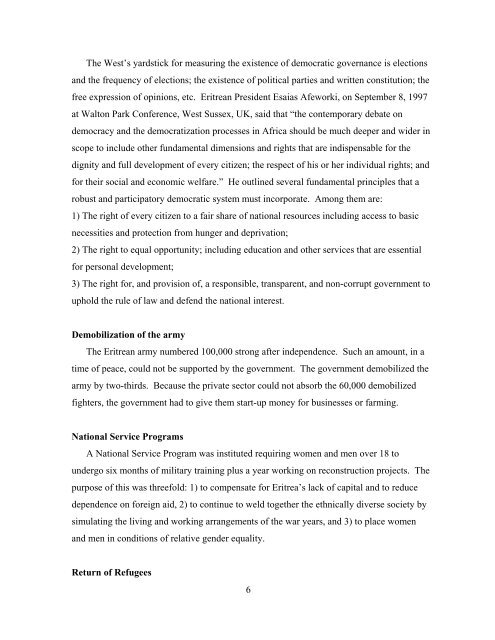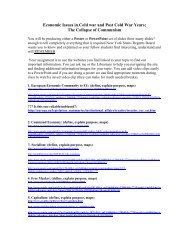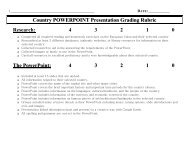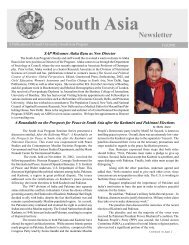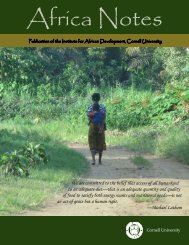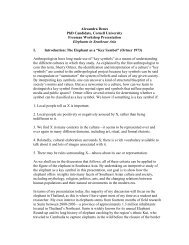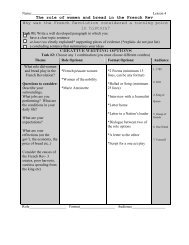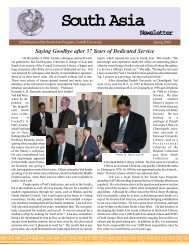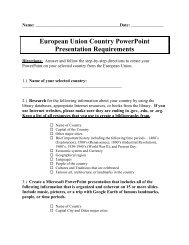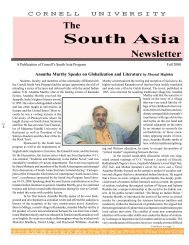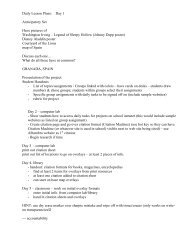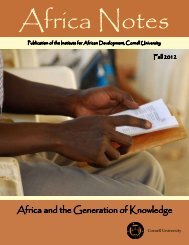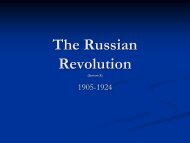Technology Transfer in Eritrea - Institute for African Development
Technology Transfer in Eritrea - Institute for African Development
Technology Transfer in Eritrea - Institute for African Development
You also want an ePaper? Increase the reach of your titles
YUMPU automatically turns print PDFs into web optimized ePapers that Google loves.
The West’s yardstick <strong>for</strong> measur<strong>in</strong>g the existence of democratic governance is elections<br />
and the frequency of elections; the existence of political parties and written constitution; the<br />
free expression of op<strong>in</strong>ions, etc. <strong>Eritrea</strong>n President Esaias Afeworki, on September 8, 1997<br />
at Walton Park Conference, West Sussex, UK, said that “the contemporary debate on<br />
democracy and the democratization processes <strong>in</strong> Africa should be much deeper and wider <strong>in</strong><br />
scope to <strong>in</strong>clude other fundamental dimensions and rights that are <strong>in</strong>dispensable <strong>for</strong> the<br />
dignity and full development of every citizen; the respect of his or her <strong>in</strong>dividual rights; and<br />
<strong>for</strong> their social and economic welfare.” He outl<strong>in</strong>ed several fundamental pr<strong>in</strong>ciples that a<br />
robust and participatory democratic system must <strong>in</strong>corporate. Among them are:<br />
1) The right of every citizen to a fair share of national resources <strong>in</strong>clud<strong>in</strong>g access to basic<br />
necessities and protection from hunger and deprivation;<br />
2) The right to equal opportunity; <strong>in</strong>clud<strong>in</strong>g education and other services that are essential<br />
<strong>for</strong> personal development;<br />
3) The right <strong>for</strong>, and provision of, a responsible, transparent, and non-corrupt government to<br />
uphold the rule of law and defend the national <strong>in</strong>terest.<br />
Demobilization of the army<br />
The <strong>Eritrea</strong>n army numbered 100,000 strong after <strong>in</strong>dependence. Such an amount, <strong>in</strong> a<br />
time of peace, could not be supported by the government. The government demobilized the<br />
army by two-thirds. Because the private sector could not absorb the 60,000 demobilized<br />
fighters, the government had to give them start-up money <strong>for</strong> bus<strong>in</strong>esses or farm<strong>in</strong>g.<br />
National Service Programs<br />
A National Service Program was <strong>in</strong>stituted requir<strong>in</strong>g women and men over 18 to<br />
undergo six months of military tra<strong>in</strong><strong>in</strong>g plus a year work<strong>in</strong>g on reconstruction projects. The<br />
purpose of this was threefold: 1) to compensate <strong>for</strong> <strong>Eritrea</strong>’s lack of capital and to reduce<br />
dependence on <strong>for</strong>eign aid, 2) to cont<strong>in</strong>ue to weld together the ethnically diverse society by<br />
simulat<strong>in</strong>g the liv<strong>in</strong>g and work<strong>in</strong>g arrangements of the war years, and 3) to place women<br />
and men <strong>in</strong> conditions of relative gender equality.<br />
Return of Refugees<br />
6


